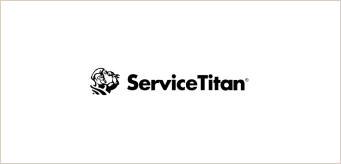
Employees are eager to fill skill gaps: 78% of learners expressed the need for course recommendations based on their skill gaps.
Employees seek out needs-based learning: Employees’ number one criteria for choosing professional development courses is “does it help me perform better in my current role?”
- Job skills are changing faster than ever: The number of skills required for a job is increasing by 10% year over year, and more than 30% of the skills required for any given job three years ago will soon be irrelevant. Continued career training to gain the new skills required to stay up-to-date with a given role is more important now than ever.
Additional Source: Gartner
Perform a skill gap audit: Use available data to determine both the professional skills currently represented by the employees in your organization and the skills your organization currently lacks.
Find development opportunities for missing skills: Once you know the skills you’re missing, find learning and development resources and employee development software dedicated to helping professionals learn those specific skills.
- Consider the future: Focus on finding opportunities to develop skills that will both help your organization’s employees maintain their edge and prepare them for what their roles and careers may look like in the future.
Employees want to develop career skills: 78% of learners expressed the need for course recommendations based on their career goals.
Personalization hugely improves engagement: Companies that recommend personalized professional development paths on LinkedIn Learning see 69% more hours of learning watched per employee.
- Career development attracts new hires: 80% of people seeking employment say they are looking for a company that will help them achieve career growth.
Additional Source: Prudential
Discover your employees’ goals: Encourage managers to conduct one-on-one meetings with their direct reports to better understand and quantify their learning goals. Some employee development software will even let you import their answers as skill-based development goals.
Seek the learning to match: Once you understand your employees’ individual career goals, set them up with the learning resources they’ll require to learn the skills they surfaced.
- Balance individual and organizational goals: Cross-reference your employees’ skill gaps and career goals with the overall needs of the organization. Pair employee goals with organizational skill gaps to boost engagement and reach organizational goals at the same time.
Managers drive engagement: Managers account for at least 70% of employee engagement scores.
- Employees want learning guidance from their managers: 56% of employees say they would spend more time learning if their manager suggested a course to improve their skills.
Co-create individual development plans: Have your managers co-create an individual, customized professional development plan with their direct reports, then check in regularly on how these plans are progressing.
Track progress and drive accountability: Give your managers the ability to monitor learning progress directly from the employee development software. Make tracking and evaluating this progress a key part of how managers are evaluated themselves.
- Organize manager syncs: Organize regular “manager sync” meetings, where all managers discuss success and barriers driving key learning objectives, and determine an organization-wide strategy to continue to promote learning going forward.
Social features boost engagement: Employees who use LinkedIn Learning’s social features spend 30x more hours learning than those who don’t.
- Social features make learning more effective: L&D pros believe that learning is more engaging when people learn together (86%), and believe employees who learn together are more successful (91%).
Create the space: Provide a forum for learners to interact with one another while learning, preferably in the learning environment itself. Create group-based review sessions and chatrooms to facilitate student interaction throughout the learning process.
- Make it a friendly competition: Break learners into teams and award the team with the most hours of learning or the highest certification test scores. Keep track of team progress with a leaderboard so everyone’s motivated to get ahead.
Read more about how to implement employee development software successfully:













